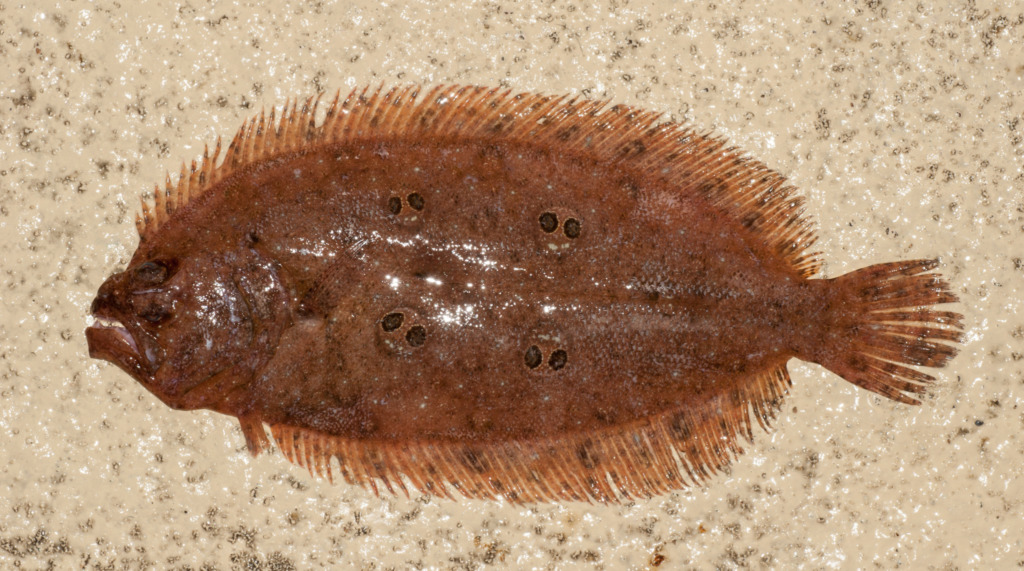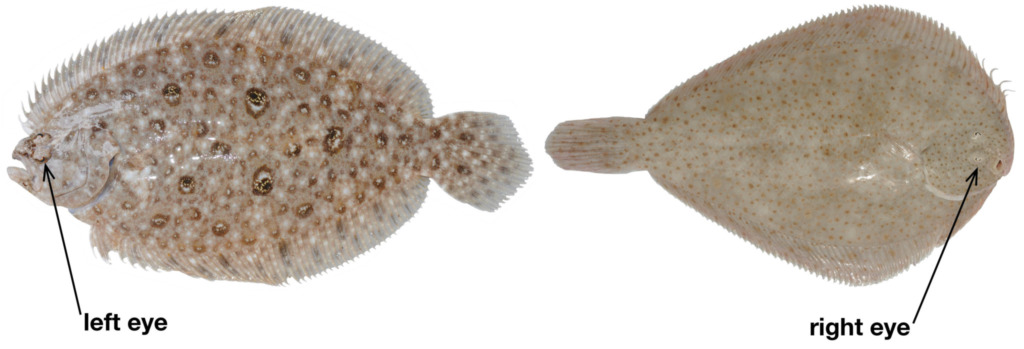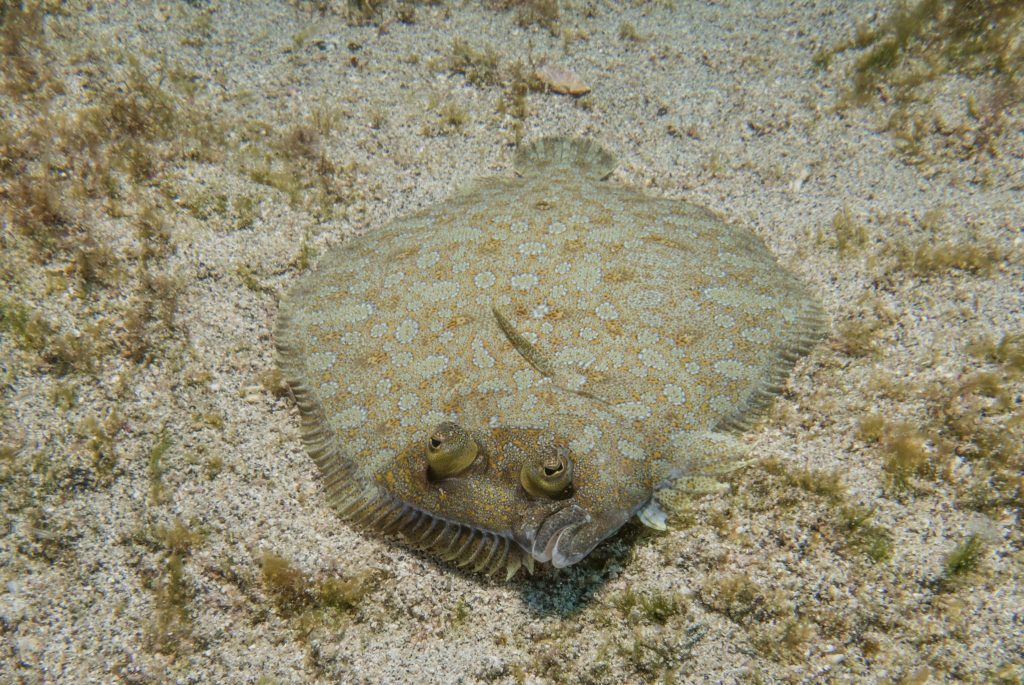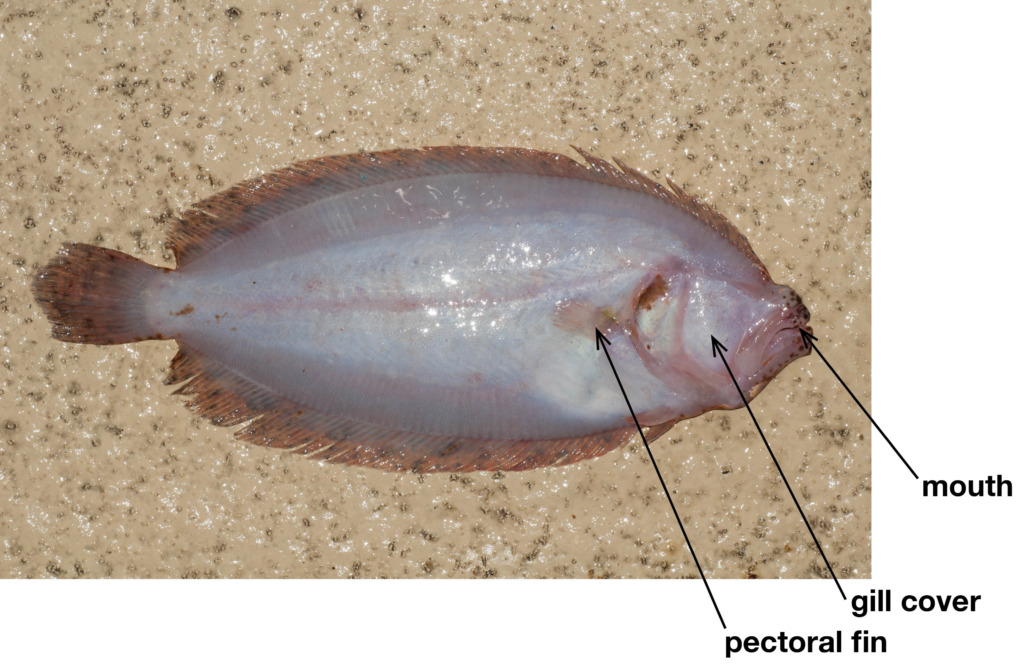Typically found in estuaries and coastal waters off Western Australia, flounder have an interesting life history.

Figure 1. The iconic flattened body shape of a flounder – Bigtooth twinspot flounder (Image: Chris Dowling)
A flounder’s flattened body shape and ability to change colour means they are well adapted to camouflaging on a sandy and silty sea floor. By wiggling its fins, the flounder can also cover itself in sand, leaving only it eyes in view. This not only helps to protect it from potential predators, but also allows it to catch its prey (including crustaceans and small fish) by surprise.
Starting life as a ‘typical’ fish larvae – swimming upright with eyes on either side of its head – the flounder changes in physical form (a process of metamorphosis) from larvae to juvenile fish, when one eye migrates to the other side of the body. Which side the eye migrates to depends on the species.
A common flounder species found in Western Australia is the smalltooth (small toothed) flounder, Pseudorhombus jenynsii. It is a ‘left-eye’ flounder as the right eye migrates to the left side of the body.
The smalltooth flounder grows to about 55 cm and 1.5 kg. It has several dark brown rings enclosing golden speckles on its back and small teeth. The underside of the flounder, which is hidden from view on the ocean floor, is white in colour.
Another species of flounder found in WA is the spotted flounder, Ammotretis lituratus. This species is a ‘right-eye’ flounder.

Figure 3. A ‘left-eye’ flounder, Pseudorhombus jenynsii and a ‘right- eye’ flounder, Ammotretis lituratus (Image: Chris Dowling)
Did you know …
that flounder eyes move independently of each other?


